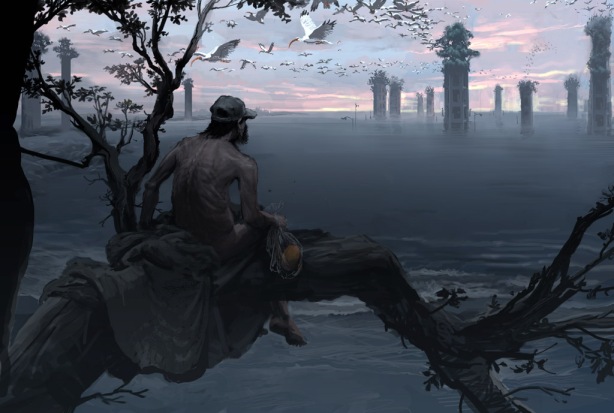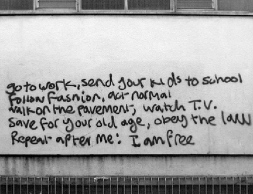Thoughts on Margaret Atwood’s Oryx and Crake by way of wilderness and post-apocalyptic genre traditions

“Snowman wakes before dawn” – Oryx and Crake fan art by Jason Courtney
More images: http://www.perdador.com/f6update/illustration_f9.html
I gave a guest lecture yesterday on Oryx and Crake for a colleague’s 200-level Environmental Literature course. My presentation was organized around the ways that the book participates in genres, challenges some of their conventions, and updates the “classic” dystopia (We, BNW, 1984, et cetera) by moving the locus of power from the centralized state to a more nebulous net of corporations and their mercenaries.
Because nearly any lower-level survey of environmental literature will necessarily include readings drawn from the mostly-American, white male-dominated, wilderness tradition, my prep also involved looking for ways to connect what is going on in Oryx and Crake with those texts that students had recent familiarity with. I’m not sure how well the lecture worked in setting this up, but the result was something that, in retrospect, seems quite obvious. However, I hadn’t previously fleshed it out, which was kind of weird (I guess wilderness writing hasn’t been on my mind much recently). My main take away point is this: Post-apocalyptic protagonists share a number of traits with protagonists or narrators of the wilderness genre. This has interesting implications for connecting a reading of Snowman in Oryx and Crake to both genres.



You must be logged in to post a comment.